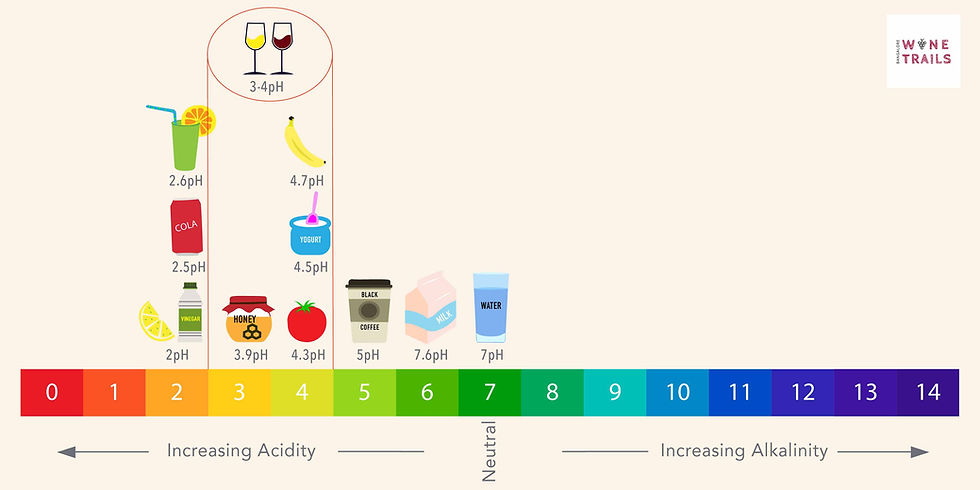UNDERSTANDING ACIDITY IN WINES
- Bangalore Wine Trails

- May 7, 2020
- 2 min read
Lemon juice, vinegar, and buttermilk have one thing in common: they make our mouth water. Literally. This ‘mouth-watering’ or ‘puckering’ sensation is called acidity.
Acidity is one of the five main taste sensations our tongue can experience. It is what makes food taste sour; it brightens a dish and helps bring all the other flavors into balance (imagine a dash of lime over a piece of tandoori kebab), and it refreshes.

Like many other foods, wine has an acidity that comes from the acids (mainly tartaric and malic) naturally present in grapes. Therefore, all wines have a certain level of acidity, commonly expressed as high, medium and low in the wine parlance. In general, white wines have more acidity than reds.
One way to assess the wine’s acidity is to see how your mouth reacts to the acid: the more the saliva, the higher the acidity.
A wine with great acidity is often described as crisp, bright, or fresh. And it has the same refreshing effect on the palate, as would any citrus drink, like a glass of lemonade. Too much acidity will make the wine taste harsh and bitter while too little acidity will make the wine taste flabby and dull.

The standard unit of measuring the strength of acidity is pH. The pH scale ranges from 0 to 14, with 0 being extremely acidic, 7 being neutral (water), and 14 being extremely alkaline. All wines lie on the acidic side of the spectrum, and most fall between 3pH and 4pH. High acid wines may taste lemony while lower acid wines could be as flat as Greek yogurt.
Interestingly, Coca-Cola with 2.5pH is more acidic than wine. But the sweetness in Coca-Cola reduces the sensation of acidity in the beverage. This is what is known as the perception of acidity. Likewise, acidity in wine should not be considered in isolation. For acidity to work best the wine needs to be in balance with all of its other components – tannin (bitterness), alcohol, and sweetness.
Importance of acidity in the context of wine
Acidity plays three major roles in wine. First, it enhances the aromas in wine and is significant for the wine’s overall balance.
Second, it refreshes and cleanses the palate getting you ready for the next bite. This attribute makes wine enjoyable as an apéritif on a hot day as well as an incredible accompaniment with food.
If the dish is dominated by high citrus elements, like lemon or tomato sauce, then a wine with equally high acidity will cancel each other out, and all the natural flavors will become prominent. Or, if the dish is creamy, a wine with high acidity will cut through the richness, allowing your mouth to experience all the flavors.
Third, acidity in wine adds stability and acts as a backbone for long-term aging, especially in the case of white wines. High acid wines are likely to improve with time than low acid wines.
Some wine grapes that are associated with great acidity
White wine: Sauvignon Blanc, Chenin Blanc, Albariño, Riesling, Pinot Grigio, Chablis (uses Chardonnay grapes), Sparkling wine, Champagne
Red wine: Sangiovese (e.g. Chianti, Brunello Di Montalcino), Nebbiolo, Pinot Noir, Tempranillo, Cabernet Franc



Comments